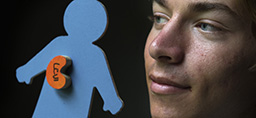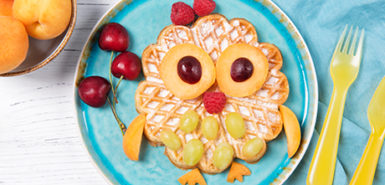
Children who accidentally swallow button batteries should immediately be given honey to reduce their risk of serious injury and death, according to a new study done with pigs.
“Button batteries are ingested by children more than 2,500 times a year in the United States, with more than a 12-fold increase in fatal outcomes in the last decade compared to the prior decade,” study co-principal investigator Dr. Ian Jacobs said in a Children’s Hospital of Philadelphia news release.
“Since serious damage can occur within two hours of ingesting a battery, the interval between ingestion and removal is a critical time to act in order to reduce esophageal injury,” he noted.
Jacobs is a pediatric otolaryngologist and director of the hospital’s Center for Pediatric Airway Disorders.
Other uses for honey
Honey is an artisanal food that can be used as a sugar substitute.
Lindsey Jelsma, PNP-PC, a pediatric nurse practitioner at Spectrum Health Helen DeVos Children’s Hospital, recommends honey for soothing a child’s cough. Jelsma noted, however, that children under the age of 12 months should not get honey—it carries the risk of infant botulism.
Injury and poison prevention
Keep coin lithium battery-controlled devices out of sight and reach of children.
Remote controls, singing greeting cards, digital scales, watches, hearing aids, thermometers, children’s toys, calculators, key fobs, tea light candles, flashing holiday jewelry and decorations all contain button batteries.
The Spectrum Health Helen DeVos Children’s Hospital injury prevention team has compiled information and tips to help you with home safety to limit these dangers.
When a swallowed button battery reacts with saliva and tissue of the esophagus, it creates a solution that dissolves tissue and can cause severe damage to the esophagus, airway, vocal cords and major blood vessels, the researchers explained.
The longer it takes for the battery to be removed, the higher the risk of serious injury.
The researchers used live pigs to test if a variety of liquids—including honey, juices, sodas and sports drinks—could provide a protective barrier between a swallowed battery and tissue until the battery is removed. They found that honey and a medication called sucralfate were the most effective.
The study was published online in the journal The Laryngoscope, and the findings are being incorporated into the latest National Capital Poison Center Guidelines for management of patients who’ve swallowed button batteries.
“Our recommendation would be for parents and caregivers to give honey at regular intervals before a child is able to reach a hospital, while clinicians in a hospital setting can use sucralfate before removing the battery,” Jacobs said.
But the researchers said these substances should not be used in children who may have sepsis or perforation of the esophagus, severe allergy to honey or sucralfate, or in children younger than 1 year old due to a small risk of botulism.
“While future studies could help establish the ideal volume and frequency for each treatment, we believe that these findings serve as a reasonable benchmark for clinical recommendations,” Jacobs said. “Safely ingesting any amount of these liquids prior to battery removal is better than doing nothing.”
The study’s other principal investigator, Dr. Kris Jatana, a pediatric otolaryngologist at Nationwide Children’s Hospital in Columbus, Ohio, said the shiny metallic batteries should be stored where toddlers can’t get to them.
“Parents and caregivers should check all electronic products in the home and make certain that the battery is enclosed in a compartment that requires a tool to open and periodically check to ensure it stays secure over time,” Jatana said in the news release.
 /a>
/a>
 /a>
/a>
 /a>
/a>